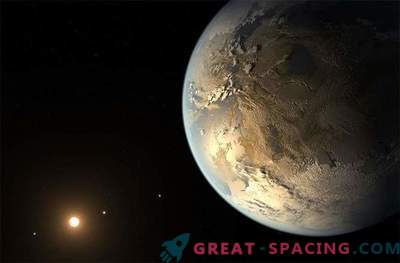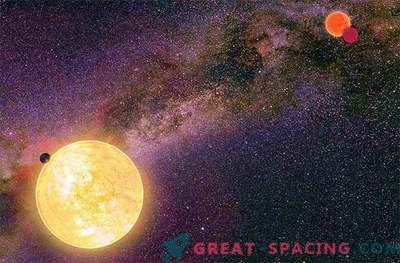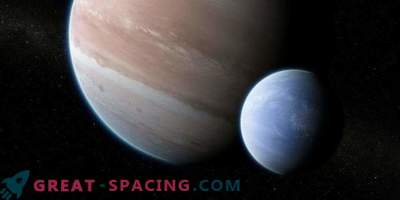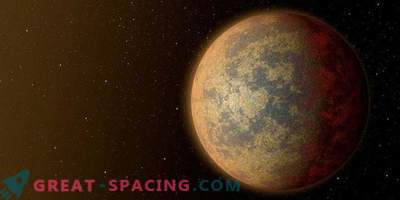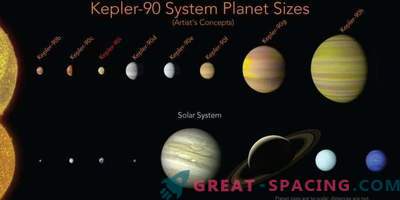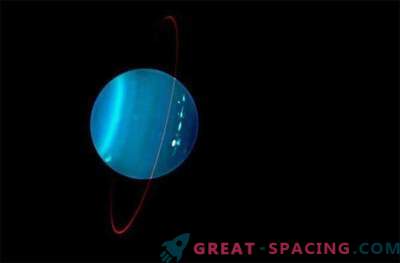
The artistic vision of an exoplanet K2-288Bb living within the habitable zone of a native star. It is believed that there may be liquid water on the surface.
Civil scientists presented a new remote exoplanet. It is believed that it is twice the size of Earth and lives in the zone where the star lives. Exoplanet K2-288Bb can be a rocky world or a gas-rich planet like Neptune. It is located at a distance of 226 light years from us.
The new world exists in the K2-288 star system, represented by two dim cool M-type stars. They are divided by 8.2 billion km from each other (6 times the distance from Saturn to the Sun). A brighter star is twice as large and massive as the Sun. But the second takes only 1/3 of the solar mass and size. K2-288Bb rotates around a smaller star with a period of 31.3 days.
It is important that K2-288Bb can be in the habitat zone, which means that water is located on the surface in a liquid state. Exoplanets were found using data from the fourth observation campaign of the K2 mission (2014-2018s). Scientists were looking for evidence of periodic changes in the brightness of stars hinting at the passage of the planet in orbit (transit method). Thus, we managed to find evidence of two probable planetary transits in the K2-288 system. To fix the planet it was necessary to find the third case. It turned out that the team did not use all the K2 data. Kepler changed location every 3 months. As a result, the first days of data recording were ignored.
This information was found by civilian scientists, confirming the third transit case in the K2-288 system. The find will allow to better understand the Fulton gap - the lack of exoplanets, which are 1.5-2 times larger than the Earth. The data was compared with observations of the Spitzer space telescope and the Gaia mission to confirm the findings. It is worth recalling that Kepler ran out of fuel in October 2018.

